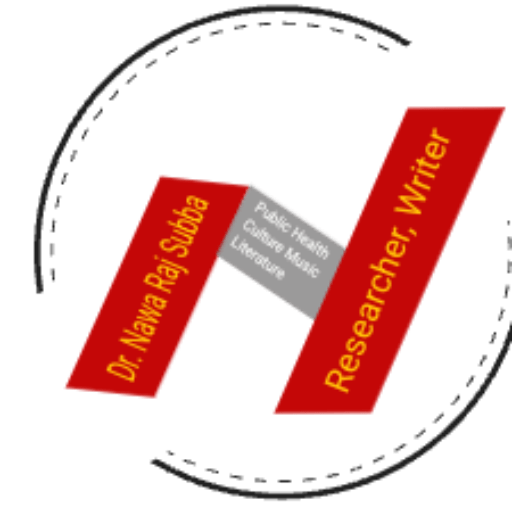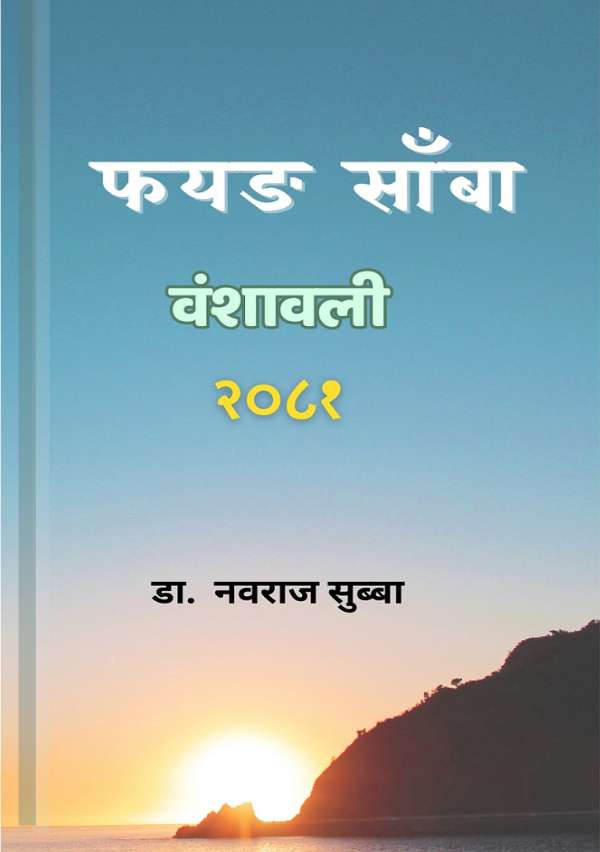Health Seeking Behavior of Rajbanshi Community in Katahari and Baijanathpur of Morang District, Nepal
Nawa Raj Subba
Citation: Nawa Raj Subba. (2004). Health Seeking Behavior of Rajbanshi in Katahari and Baijanathpur of Morang District, Nepal. Journal of Nepal Health Research Council. Vol.2, No.2, October 2004, pp14-17.
Corresponding Author: Nawa Raj Subba, E-mail: [email protected]
Abstract
| Introduction | In Nepal, there are numbers of ethnics having their own traditional health-seeking behavior. Rajbanshi is one of the indigenous people of Morang district whose health-seeking behavior varies depending upon their socio-economic status. |
| Objectives | The objective of the study was to assess the practices of using modern, self and alternative medication on the basis of socio-economic status. |
| Methods | The study was a cross-sectional study of descriptive type. Information has been collected from the field survey by using semi-structured questionnaires containing both open and close-ended questions. Total 175 households of two VDCs was selected from the VDCs rosters using a random number table for convenience and to cover the expected households. Data were analyzed utilizing the Epi Info 6.0 version. |
| Results | Modern, Alternative and Self-medication were common in Rajbanshi community. Modern medication was popular but was expensive to afford as reported by the majority of people. A significant proportion of Rajbanshi people having less than 2 bighas land and uneducated was adopting self-medication in Katahari and Baijanathpur of Morang. |
| Conclusion | There is a relationship between economic, education status and health-seeking behavior in Rajbanshi community. |
| Keywords | Rajbanshi, Health seeking behavior, Modern, Alternative and Self-medication |
Introduction
Health Seeking Behavior is a usual habit of a people or a community that is resulted by the interaction and balance between health needs, health resources, socio-economic and cultural as well as national/ international contextual factors.[1] It is the behavior of using health services within the existing health system or treatment-seeking behavior of the latest illness as reported by them. This was categorized as (a) Modern medication such as Hospital, HP/SHP and private clinic (b) Alternative medication such as Ayurvedic and Homeopathic system of medication; and (c) Self-medication such as Dhami/Jhakri (Shaman healers), drug retailers, grocery keepers, drug peddlers, household medicine and other than modern and alternative medication. Kafle and Gartoulla[2] and Gartaula[3] have categorized self-medication as Shamanism, Priest, Dhami-Jhakri, herbal, drug retailers, grocery, kit-bag, drug peddler, neighbor, following old medicine prescriptions etc and except the present prescription by qualified medical practitioners. WSMI[4] has indicated as Self-medication is the use of specifically designed, labeled and authorized medicines available legally without prescription for the treatment or prevention of common illnesses, which can be recognized by the people. Traditional medicine is not included in the national health system. If traditional medicines are legally available without a doctor’s prescription, then they are included in what we call self-medication. Alternative medicine is a medicine which is outside the regular allopathic medicine.[5] Sometimes it is accepted by national health plans for coverage and sometimes it is not.[6] This would cover, for example, acupuncture, ayurvedic, naturopathy, and homeopathic medicine etc.
Methodology
This is a cross-sectional and descriptive type of study based on information acquired from field visit carried out in January 2001. Semi-structured questionnaire sheets containing both open and close-ended question regarding health-seeking behavior of the community were administered to 175 sample households of Katahari and Baijanathpur Village Development Committee (VDC) of Morang district. The sample was selected from the VDCs rosters using random number table and respondents were asked relevant questions with the history of illness/disease within three months from interview date. Of those who were an ill/sick person of the above criteria were consulted for detailed information otherwise only demography was taken for the rest. Data were analyzed utilizing the Epi Info 6.0 statistical package. Data from pre-coded questions were entered into Epi Info 6.0 database. Attempts were made to minimize the potential error using Check file the data entry edit program. The Check file incorporated skip patterns, legal values and range checks that facilitated more rapid and accurate data entry. The participants were requested for Focal Group Discussion (FGD) to have one and half an hour’s sessions for the reason of their self-medication during household visits. Personal contacts with a self-medicated population within three months of the study period were made to have 8 persons in one FGD and attempted total ten FGD with 80 persons. Verbal consent was taken before taking interviews and FGDs.
Results
Table 1: Education and Sickness (n=175).
| Education | Sickness (n) | Percentage |
| Educated | 45 | 26.0 |
| Uneducated | 130 | 74.0 |
| Total | 175 | 100.0 |
Table 1 presents the status of sickness on the basis of educational level in the community.
The proportion of feeling sick of uneducated was higher as 74.0 percent (130) than educated 26.0 percentage (45). SLC pass and above was considered as educated and SLC failed and below were considered as uneducated in the study.
Table 2: Education and Medications (n=175).
| Medications | Uneducated (n=130) | Educated (n=45) | P – Value |
| Modern Medication | 126 (96.9) | 42 (93.3) | 0.3753 |
| Self-Medication | 85 (65.4) | 14 (31.1) | 0.0000063 |
| Alternative Med. | 27 (20.8) | 13 (28.8) | 0.2635 |
Table 2 indicates that the practice of using self-medication by uneducated Rajbanshi was significantly higher than educated (P< 0.05).
Table 3: Medications by Economic status (n=175).
| Medication | <2 Bighas land (n=107) | 2.1-4 Bighas land (n=22) | >4 Bigha land (n=46) | P – Value. |
| Modern Medication | 104 (97.2) | 20 (90.9) | 44 (95.6) | 0.3871 |
| Self-Medication | 68 (63.6) | 14 (63.6) | 18 (39.1) | 0.0160 |
| Alternative Med. | 19 (17.7) | 7 (31.8) | 40 (87.0) | 0.0000 |
Table 3 presents that people having less than 2 Bighas land were adopting self-medication significantly (P=0.05). Likewise, people having more than 4 Bighas land adopting alternative medication was also significant (P= 0.05). People were classified into three categories on the basis of land ownership as (a) Less than 2 Bighas, (b) 2.1-4 Bighas, (c) More than 4 Bighas.
Table 4: Diseases reported during an encounter with the respondents (n=175).
| S.No. | Diseases | Frequency | Proportion Percentage |
| 1 | A headache, body ache, weakness | 89 | 50.8 |
| 2 | Acute Respiratory Infection (ARI) | 77 | 44.0 |
| 3 | Fever | 54 | 30.8 |
| 4 | Eye/ENT/Oral Problems | 33 | 18.8 |
| 5 | Diarrhea/Dysentery | 24 | 13.7 |
| 6 | Gastritis(APD) | 24 | 13.7 |
| 7 | Skin diseases | 13 | 7.4 |
| 8 | Tuberculosis | 10 | 5.7 |
| 9 | Rheumatoid Arthritis | 9 | 5.1 |
| 10 | Asthma (COPD) | 7 | 4.0 |
Table 4 shows that symptoms like a headache, body ache, weakness, and fever were reported by more than 30 percent respondents. ARI, Diarrhoeal diseases, APD were reported by more than 13 percent respondents. Skin diseases, tuberculosis, rheumatoid arthritis were reported by more than 5 percent respondents.
Table 5: Medication sought by the family (n=175)
| Medication | Number | Proportion Percentage |
| Modern medication | 168 | 96.0 |
| Self-medication | 100 | 57.1 |
| Alternative Medication | 40 | 22.8 |
Table 5 presents medications sought by the family in any kind of latest illness during the past three months. Modern, self and alternative medications were sought by 96 percent. 57.1 percent and 22.8 percent respectively.
Table 6: Expenses for Treatment (n=168).
| S.N. | Topics | Cost in Rupees | Proportion |
|
|
Purchasing drugs | 598.35 | 58percent |
|
|
Paying Fees | 201.68 | 19.5percent |
|
|
Transportation | 52.30 | 5percent |
|
|
Helper | 38.58 | 3.7percent |
|
|
Other | 142.77 | 13.8percent |
Table 6 indicates that the bulk amount of expense goes on purchasing drugs (58.0 percent), followed by paying doctors fees (19.5 percent ). And 5.0 percent cost goes for transportation, 3.7 percent for the helper and 13.8 percent for others. Average expenditure per sick respondent was Rs.1 031.64
Table No. 7: Affordability as perceived by the Respondents (n=175).
| Affordability | Number | Percentage. |
| Yes | 47 | 26.8 |
| No | 128 | 73.2 |
| Total | 175 | 100.0 |
Table No. 9 suggests that 73.2 percent people were reported inability to afford the cost for treatment.
Discussion
Katahari and Baijanathpur VDCs are located nearby Biratnagar sub-metropolitan city. Private allopathic clinics conducted by paramedics were abundant in the local market, which was familiar also in the community. So, minor injuries and ailments were being treated there. They have also got the facility of Koshi Zonal Hospital for emergency and special services. People those who need higher services for emergency, obstetrics and chronic cases, used to go to higher service centers located at Biratnagar, Dharan, Kathmandu, and even India. Rajbanshi people were deeply attached to their Self-medication practices. They readily go to Dhami/Jhakri/Shaman due to their cultural factor and because of their perceived satisfaction. During FGD it was noted that lack of adequate money to pay for modern medication also leads them to go for Self-medication. Poor Rajbanshi adopted self-medication was significant (P<0.05) in Katahari and Baijanathpur VDCs (Table 3). Similarly, practices of using self-medication by uneducated were highly significant (P=<0.05) in the community (Table 2). Niroula, B.B.[7], noted in Benighat that going to a faith healer is a ritual for seeking treatment, but if the illness persists even after two or three visits to a healer, the people of Benighat seek modern medicine. Many of them also use self-medication, with medication bought at the medicine shop. Others try herbal medications they have tried before. However, the treatment-seeking behavior is changing with the availability of the modern health care facility in the area. Treatment-seeking behavior is largely determined by types of illness and popular beliefs regarding them. The cultural diversity brought about by caste and ethnic mix and topographical variations extend to health-seeking behavior. Some of the health beliefs may be common to all caste-ethnic groups but some are more specific to a particular caste and ethnicity. Developments in modern medicine and the expansion of modern health care facilities have played a very important role in reducing morbidity and mortality in the developing world. Despite a steady penetration of modern health care services, economic underdevelopment has also led to a relatively weak health infrastructure in Nepal. Health improvement programme A Summary report[8] has revealed that 20 percent disadvantaged and 11 percent general population in Eastern development region were getting treatment from traditional healers. However, modern, self and alternative medications were an indispensable part of health seeking behavior (Table 5) in Rajbanshi community.
An average treatment cost per case was Rs. 1031.64 (SD=6). They had taken either loan (14%) or had to sell land, animals, grains or personal belongings (53%). The bulky proportion (57.8%) expenses felled on buying drugs and for fees (19.55%) thereafter, for transportation 5percent, helper 3.74%, others 13.84 percent (Table 6). Seventy-three percent respondents reported inability to afford the expenses for modern medication (Table No. 7). The issue of expensive medical treatment and difficulty in affordability was also pointed out during focus group discussions. Therefore, the cost for modern medical treatment was said to be unaffordable for the majority of people in Rajbanshi of Katahari and Baijanathpur of Morang. According to public health point of view, it is one of the major causes for poor access to health care services for needy people.
The Rajbanshi Community
Rajbanshi[9] is one of the 61 ethnic groups in Nepal. Ethnic or Indigenous people are having low health status in the world.[10] Tamang, A., et.al,[11] described treatment-seeking behavior which is determined by the perceived causes of reproductive health problems. The family members believe that modern medicines will not work (ineffective) if the patient is not first seen by a faith healer. Visit a health facility becomes inevitable only when the problem gets worse or unbearable. Because of their beliefs on witchcraft, reliance on traditional faith healer (TFH) for treatment is quite strong among all the ethnic communities. Tamang girls would confide their Severe Reproductive Health problems with their mothers who would, in turn, prescribe herbal/homemade remedies. Reliance over Traditional Faith Healer for treatment of problems is also common among Tamang girls. A large proportion of adolescent had experienced menstrual, reproductive or urinary tract disorders and only a few had sought care. There is a need to tailor the program to suit the needs of specific ethnic groups.
Uneducated Rajbanshis reported more sickness than educated people (Table 1) and they are also using more self-medication (Table 2) in Katahari and Baijanathpur in Morang. A number of studies have found a correlation between knowledge and delayed diagnosis. Knowledge includes the ability to recognize symptoms, identify causes and transmission routes, and familiarity with the availability of cure. Although the evidence doesn’t conclusively suggest that knowledge independently determines care-seeking behavior, the correlation about knowledge and timing of diagnosis is well documented.14
Diseases reported by more than thirty percent of respondents were mainly symptoms like a headache, body ache, weakness, and fever. ARI, Diarrhoeal diseases, APD were reported by more than 13 percent respondents. Skin diseases, tuberculosis, rheumatoid arthritis were reported by more than 5 percent of respondents (Table 4). Annual Report of Department of Health Services[12] noted top 5 diseases as skin diseases, ARI, diarrhoeal diseases, Intestinal worms, and Pyrexia respectively. A study[13] has realized that women could describe only obvious symptoms of their illness such as headaches, fevers, joint aches, and body aches. They were more knowledgeable about pregnancy and delivery related problems than illnesses such as tuberculosis, malaria, and typhoid. This lack of knowledge contributed to their delay in seeking care.
Waisbord[14] felt that the TB control community has recognized and addressed system components in which behavior is a key issue. Both diagnosis delay and non-completion of treatment are two central behavioral challenges. Several ongoing national and global initiatives that are part of TB control programs also aim to address behavioral challenges. Programs that offer enablers such as transportation and food subsidies for patients assume that by minimizing costs the numbers of patients seeking diagnosis and care would increase. Murphy, E.M.[15], argued that in an earlier day, the task of changing health-related behavior was thought to be simply a matter of sending health messages such as “Breastfeed your baby!” or “Use condoms!” to those who were perceived to need them-a one direction communication approach. Today, sound health promotion programs no longer rely on one shot exhortations via booklets, posters, or media broadcasts. They encompass extensive research on relevant audiences; skill-building; multi-channeled education and advocacy using influential persons; policy development; community mobilization; and organizational, economic, and environmental change. This approach recognizes that human beings live in a dynamic “social ecology” as well as a physical one. Because poverty, gender inequity, and other disparities are underlying causes of undernutrition, addressing this health problem requires behavior change at multiple levels.
Conclusion
Modern, self and alternative medications were an indispensable part of health seeking behavior of Rajbanshi community in Katahari and Baijanathpur VDCs of Morang. Modern medication was equally popular in both poor and rich or educated and uneducated. But, the majority of people had reported modern medication as expensive medication. Uneducated Rajbanshis reported more sickness. A significant number of Rajbanshis having less than 2 Bighas of land and uneducated were adopting self-medication in the community.
Acknowledgment
I would like to extend my sincere gratefulness to Dr. A.B. Joshi and Dr. Ritu Prasad Gartoulla for providing valuable guidance to conduct this study. Acknowledgment is also due to cooperation provided by the local communities, school teachers, health workers of Katahari and Baijanathpur VDCs of Morang.
References
[1] M Corlien, Designing and conducting Health System Research Projects, Heath system research training series, WHO/ IDRC, 1991.
[2] K Kafle, Gartoulla RP, Self-medication and its impact on essential drugs. A scheme in Nepal, W.H.O. DAP – 10, 1993.
[3] Gartoulla RP, An introduction to medical sociology and medical anthropology, RECID, Kathmandu, Nepal, 1998.
[4] Reinstein J, World Self Medication Industry (WSMI), UK, www.wsmi.org, 2001
[5] Agarwal SK, A guide to Alternative medicine, Indian Board of Alternative Medicine (IBAM), Calcutta, India, n.d.
[6] Gartoulla RP, Therapy pattern of conventional medicine with other alternatives Medicine, RECID, Kathmandu, Nepal, 1998.
[7] Niroula BB, Use of health services in Hill villages in Central Nepal, Population Studies Center, University of Pennsylvania, Philadelphia, 1994
[8] Subba NR, Poudel D, Karkee S, Health Improvement Programme Summary report, HMG/MoH/Eastern Regional Health Directorate, Britain Nepal Medical Trust, 2003
[9] Prospectus, HMG, MLD, National Committee for Development of Nationalities, 2000.
[10] Mabuhang BK, Policy Approaches to Indigenous People on Health Issues, Population and Development in Nepal Journal, TU CDoPS, Kathmandu, 2000;7
[11] Tamang A, Tamang J, Adhikari R, Severity Perceptions of Health Problems and Treatment Seeking Behavior among Adolescent Girls in Nepal, Conference on Young People’s Sexual and Reproductive Health Needs in Asia, New Delhi, 2004.
[12] DoHS, Annual Report, Ministry of Health, Department of Health Services, Kathmandu, Nepal, 2002
[13] World Bank, Understanding Access, Demand, and Utilization of Health Services by Rural Women in Nepal and their Constraints, 2001.
[14] Waisbord, Behavioral barriers in tuberculosis control: A literature review, The CHANGE Project/Academy for Educational Development, 2005.
[15] Murphy EM, Promoting Healthy Behavior, Health Bulletin of Population Reference Bureau, USA, 2005;2



I enjoy checking in daily to see your thoughts. I have your page bookmarked on my favorite read list!
Thank you so much!
Nawaraj subba
Hi everybody !!! It’s a nice information !!! Regards